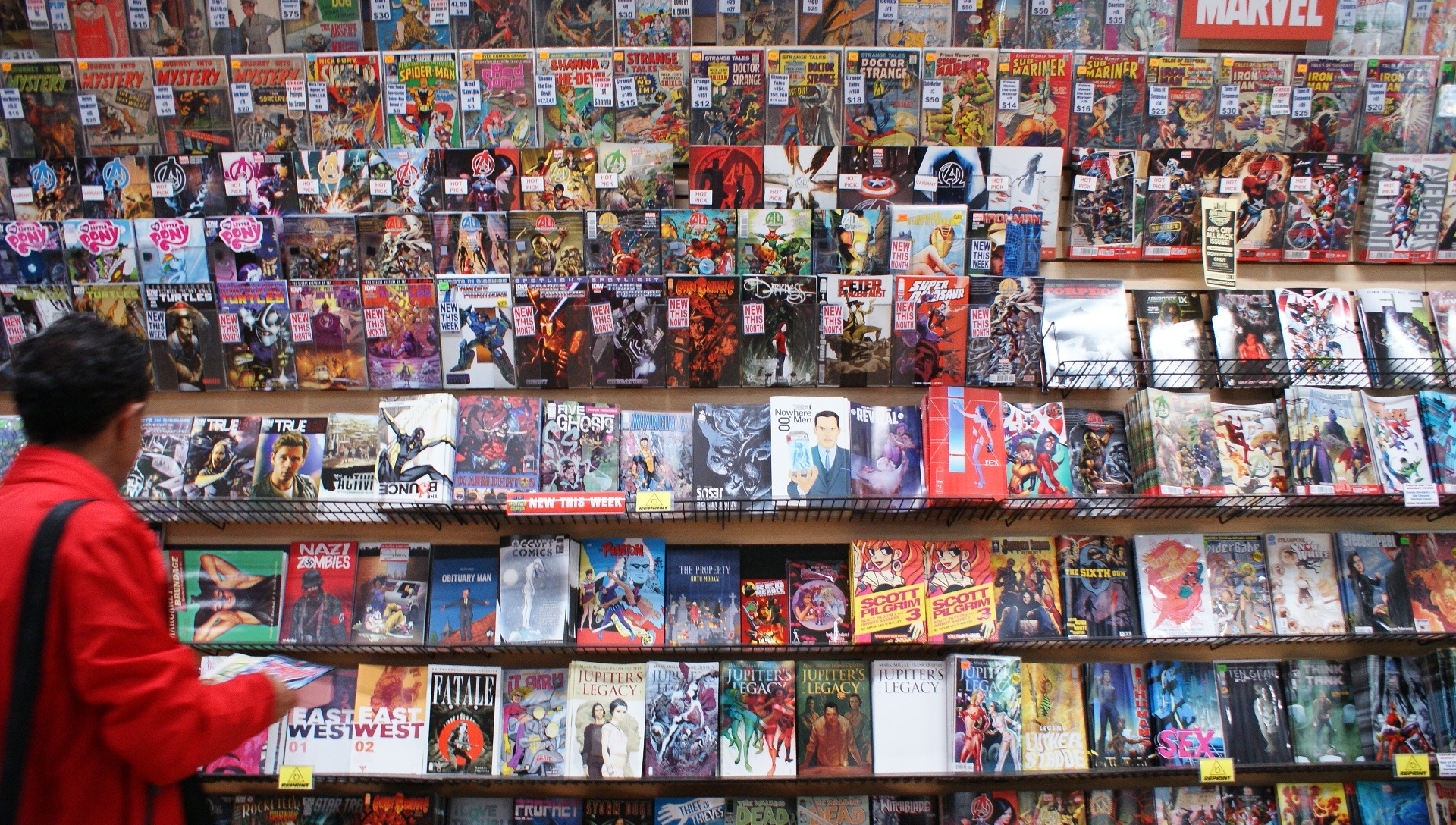How to Start Reading Graphic Novels
Andrew Edwards guides you through the fascinating visual world of comics and graphic novels
Comics in the UK are often intrinsically bound up with childhood memories of the newsagents. Located between shelves of pop, crisps and sweets, magazines and newspapers shared space with issues of The Dandy, The Beano, Buster, Victor, Bunty and many more. Most of these comics are now sadly consigned to history. Only the Beano has survived into the 21st century, and is due to celebrate its 80th birthday next year, along with the science fiction comic 2000AD, which celebrates its 40th anniversary this year. However, the majority of publications that are aimed at children still feature comic strip stories, and so the genre remains strong at present.
There is also another tradition of comics aimed at an older audience, one that has now morphed into the ‘graphic novel’. Most libraries and bookshops have a comics and graphic novels section, but they can be difficult to navigate without some basic understanding of the format. One key problem relates to the terms used. While ‘comics’ is still a recognisable term, it implies that humour is the central element, but many comics are tense and dramatic. The current term in vogue, ‘graphic novels’, relates to lengthy narratives in book form, but these are not necessarily fiction, so you get an opposition between content and form that jars, such as a ‘graphic novel’, identified as a novel, which contains a factual narrative.
It’s probably best not to get too hung up on these terms, though. It’s far better to approach the shelves with the understanding that all kinds of stories and narratives are represented, not just cartoon characters and superheroes. If we try to think of graphic novels like we would books or films, where there are little limitations in terms of topic and subject matter, then we are in a better position to understand the range of subject matter that is available. The potential of the form was summed up by the comic book writer Harvey Pekar, who said that ‘comics are words and pictures. You can do anything with words and pictures’. This is also emphasised by writer Stan Lee, the co-creator of many of the Marvel Superhero comics with artist Jack Kirby, who said:
‘If Shakespeare and Michelangelo were alive today, and if they decided to collaborate on a comic, Shakespeare would write the script and Michelangelo would draw it. How could anybody say that this wouldn’t be as worthwhile an artform as anything on earth?’

While superheroes still dominate the work published by DC and Marvel Comics in America, and humour and TV-related titles populate the British newsagents, other genres and styles can be found on a well-stocked shelf in a bookshop or library, or on a virtual provider like Comixology. You may be drawn to a fantasy title like Neil Gaiman’s Sandman series, published in various volumes by DC Comics. Alternatively, an autobiography like Alison Bechdel’s Fun Home (Jonathan Cape, 2006) may be more appealing. For readers of non-fiction, graphic journalism like Joe Sacco’s Footnotes in Gaza (Jonathan Cape, 2009) may attract your attention. There are also imported, or translated, versions of comics from across the globe that broaden the scope of the form, especially publications that originated in France and Belgium as bandes dessinées (‘drawn strips’), or in Japan as manga (‘flowing words’). These countries offer a serious level of engagement with, and production of, comic book and graphic novel material. Works for all tastes and ages are available, and keeping your eyes, and your mind, open to the range of publications could lead you to new and exciting reading experiences that you didn’t know were possible.
Comics and graphic novels are also the source from which many popular TV series and films have sprung in recent years. The domination of superhero films in Hollywood is directly descended from the superhero comic book source material: this includes the X-Men, Spider-Man and The Avengers (from Marvel Comics), Batman, Superman and Suicide Squad (from DC Comics). Other TV series and films have drawn from different genres of comics and graphic novels: The Walking Dead (Image Comics), Sin City (Dark Horse) and Gotham (DC Comics) are just some of the series that are adapted from their comic book origins. However, a film adaptation of a graphic novel source does not necessarily improve on the original. In some examples, particularly in the work of graphic novelist Alan Moore, film adaptations are a much weaker version of their source material. Moore and artist Kevin O’Neill’s sublime and intricate League of Extraordinary Gentlemen volumes were not best served by Steven Norrington’s 2003 adaptation, which bears little resemblance to the plot and themes of the first graphic novel, much to its detriment. As such, it’s probably fairer, and more accurate, to judge a graphic novel on its own merits as an artistic and literary work in itself, rather than on its adapted version. Comics and graphic novels are a valid and exciting form in their own right, and not a blueprint for a work in another medium; Scott McCloud’s book Understanding Comics is a great place to begin learning about the exciting formal elements of this medium.
The reputation of comics has waxed and waned over the decades in the UK. For much of the 20th century comics were viewed as sub-literate and a distraction for children at best, and damaging to literacy at worst. However, changing attitudes and educational research have led to comics being used in schools to develop reading skills, foster creativity and engage reluctant readers. Graphic novels are also part of the curricula at universities, with degrees in illustration specialising in the form. They are the subject of academic research, with an ever-expanding number of PhD theses, journal articles and book publications in this field. High quality journalism and literary criticism has grown in recent years; Douglas Wolk’s Reading Comics – How Graphic Novels Work and What They Mean (Da Capo Press, 2008) is a great example of such writing. Graphic novels have also been noted as a continued growth area by publishers in recent years. It seems that the form is here to stay and will continue to develop for many years to come.
© Andrew Edwards 2017
